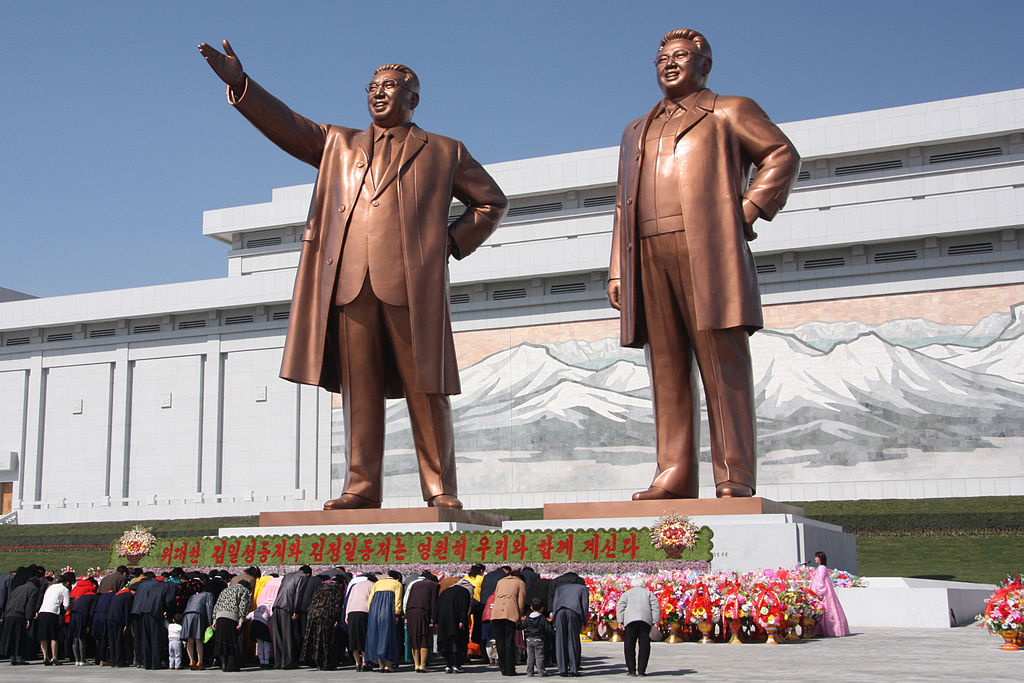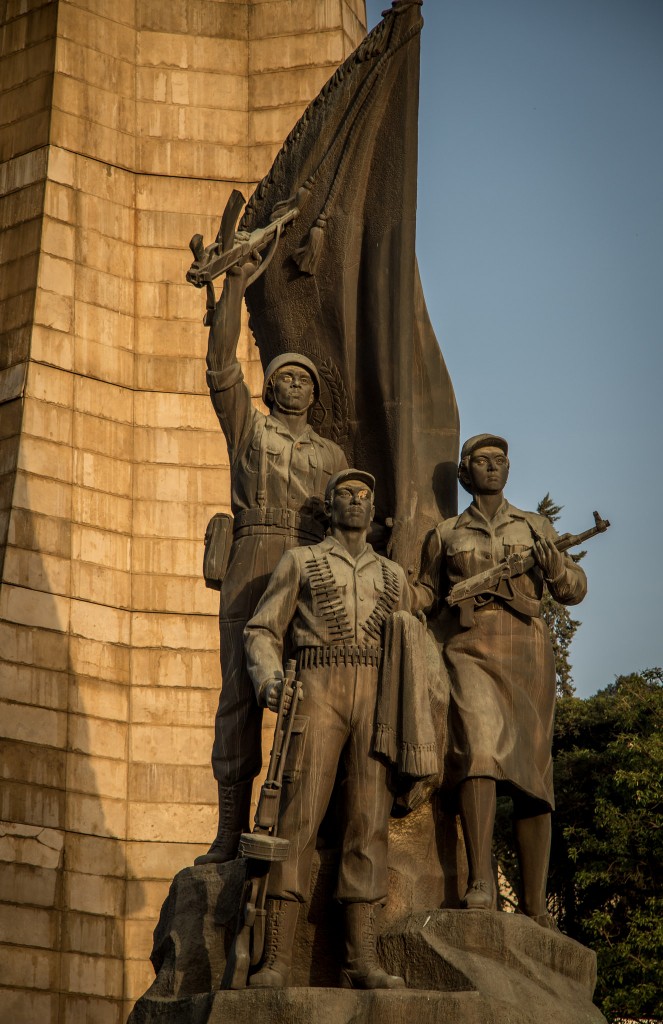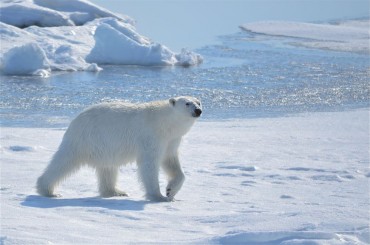
The Mansudae Art Studio has long been responsible for all the propaganda sculptures across the country, including the giant statues of late leaders Kim Il-sung and Kim Jong-il. (image: Wikimedia)
SEOUL, Dec. 2 (Korea Bizwire) – The U.N. Security Council imposed new sanctions this week on North Korea, putting a stricter cap on the country’s exports of coal as well as copper, nickel, silver, and zinc. Interestingly, the sanctions also include exports of statues, apparently one of the key sources of income for North Korea, a fact that remains unknown to most of the general public.
Official estimates note that North Korea has made roughly $160 million since 2000 from building several giant statues and monuments for African countries. Although building such structures – often marked by elements of socialist realism – is not North Korea’s most lucrative source of foreign currency, the industry remains a source of pride for the country amongst the party faithful.
According to Che One-joon, a film director and artist who has extensively studied North Korean architecture, the country has so far built giant monuments and statues in 18 countries across Africa. Since 2000, it erected sculptures in Namibia, Congo, Botswana, and Senegal.
In the beginning, the sculptures were part of diplomatic efforts, with North Korean officials electing to offer them for free to less developed countries in order to strengthen their position at the United Nations. Perhaps one of the most famous of such landmarks is the Tiglachin monument in Addis Ababa, the Ethiopian capital.
Inaugurated in 1984 as a memorial to Ethiopian and Cuban soldiers involved in the Ogaden War, it is composed of a central obelisk that is 50 meters tall, with three soldiers standing in front holding Kalashnikov rifles.

Inaugurated in 1984 as a memorial to Ethiopian and Cuban soldiers involved in the Ogaden War, it is composed of a central obelisk that is 50 meters tall, with three soldiers standing in front holding Kalashnikov rifles. (image: Flickr/ Andrew Moore)
Such “donations”, however, turned into a business for North Korea after the fall of the Soviet Union and the subsequent decline of economic support from Russia and China, in addition to the infamous “Arduous March” – a nationwide famine from the mid to late 1990s in which hundreds of thousands perished.
In 2010, North Korea built the African Renaissance Monument, a 49-meter high statue, in the outskirts of Dakar, Senegal.
The monument depicts a family group (a man, a woman, and a child) emerging from a mountaintop, with the father figure raising his left arm and holding a child aloft. The monument, which is the tallest statue in Africa, is rumored to have cost Senegal $27 million.

In 2010, North Korea built the Africa Renaissance Monument, a 49-meter high statue, in the outskirts of Dakar, Senegal. (image: Wikimedia)
Such statues are built by Mansudae Overseas Projects, a division of Mansudae Art Studio, which is North Korea’s central body for art production with some 4,000 employees that include the country’s most dedicated artists. The studio has long been responsible for all the propaganda sculptures across the country, including the giant statues of late leaders Kim Il-sung and Kim Jong-il.
Retired NBA player Dennis Rodman was also gifted a bust of his head made by the art studio in 2013 during his visit to the country to meet Kim Jong-il.
By Kevin Lee (kevinlee@koreabizwire.com)






